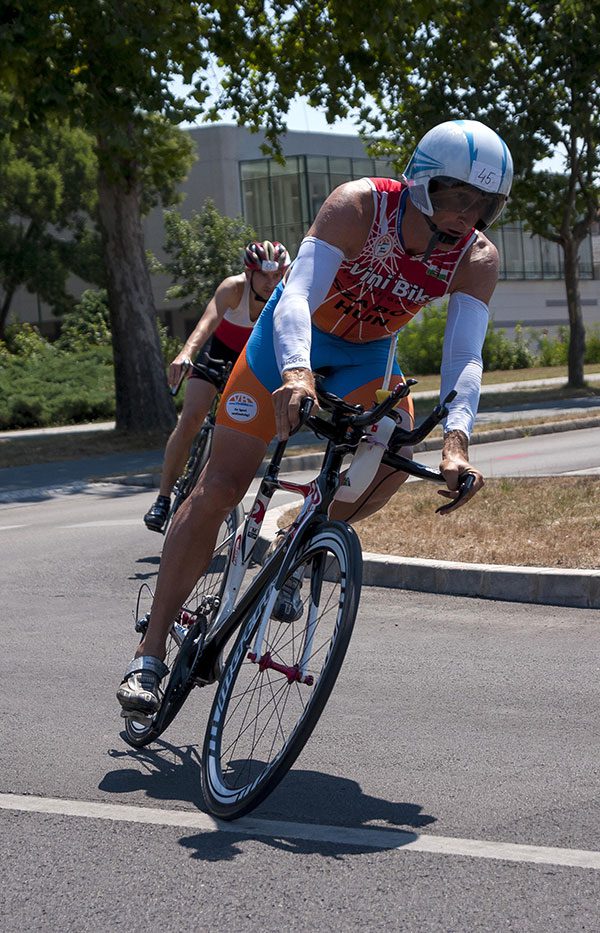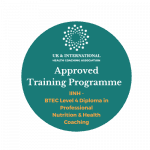Nutrition is a broad and varied topic and I think we can agree that the jury is out on whether an optimal diet really exists. The human species is so varied and each individual so unique, that pinpointing just one correct/ideal approach becomes impossible. The same dilemma applies to fitness and more specifically matching a diet to a fitness activity.
This blog post aims to present some thoughts on the popular area of endurance sport, specifically; ‘Fat adaptation’ with regard to endurance sports like marathons & triathlons.
Our body can utilise both fats and carbohydrates for energy. We have large stores of fat – even a lean 70kg male with 10% body fat will have 7kg of fat stores, about 63,000 calories worth! In contrast, we have much smaller stores of carbohydrates, about 500g or 2,000 calories which are stored in the muscle and liver as glycogen at any one time. When we exercise, our body burns a mixture of fats and carbohydrates. At lower intensities (like walking around, light exercise & even when sleeping) we burn more fat, and as we increase the intensity of activity we rely more on glycogen. This makes sense, as we typically spend 95% of our time at lower levels of activity so we should be utilising fat stores. But many people today have become inefficient at utilising fat for energy due to the constant supply of refined carbohydrates and sugars in their diet. One common (but not only) indicator of this is that ‘hangry’ feeling i.e. if you can’t go more than a few hours without needing a snack of some sort!
‘Fat Adaptation‘
The general concept of fat adaptation relates to improving the body’s ability to utilize fat for fuel, both during day-to-day activities, and as we increase intensity during long bouts of exercise, thus sparing the glycogen stored in muscle for when its needed later in the race for example. With endurance sports, the traditional approach has always been to focus on eating a high carb diet to ensure an adequate supply of ‘energy‘. This approach assumes that the main source of fuel during exercise will be glycogen and so lots of carbohydrates are to be consumed before and during the event to make sure glycogen stores don’t run out. And you know what … it works! At least from a performance point of view anyway. People have been running marathons successfully this way for a long time.

But the more important question to ask here is – does it work well?
Because, what this method also does is encourage the body to be a sugar-burner rather than a fat-burner – tying you into needing lots of carbohydrates and sugars for energy. In my opinion and experience, there are two problems with this:
- The high carb diet (usually including a lot of refined & processed carbs) can lead to a range of chronic health conditions such as diabetes, heart disease and other metabolic disorders in the longer term, mostly driven by high insulin and inflammation.
- Unless carefully managed, many of these foods are energy-dense but nutrient-poor, so they miss out on a lot of essential vitamins and minerals needed for many vital functions in the body – think of immune system & hormone production as examples.
So what about ‘fat adaptation’?
As I’ve mentioned, the idea behind fat adaptation is that we can promote the body to shift more towards burning fat for energy during training and also day-to-day, which can have a positive impact on health. If done in a sensible way, many people (it’s individual of course) can achieve the same level of performance in sports as they can on a high carb diet.
Becoming ‘fully’ fat adapted can be a long process, but the starting point is to change the diet away from processed and high carb foods and include more and more good fats, protein, and low GI veg. All of these changes will allow the body to become less reliant on carbohydrates and become more familiar with using fat for energy. The next step is to eat a low carb diet on non-training days, and then gradually lower the carbohydrates and increase the fats around training. More advanced techniques like fasted-state training can also be useful – but should only be attempted once the person has had time to adjust to a lower carb diet. A common mistake that many people make is to jump straight from their existing high carb diet to low carb and fasted state training – resulting in disaster as the body won’t have learned how to function properly on fat. It takes a little time, so take it slowly and ideally experiment during your off-peak season.
Since we can only burn fat at medium to low intensity, this approach is best suited to endurance type sports rather than shorter more intense sports like sprinting or boxing. There’s also a big difference in running a marathon in 3 hours compared to 4, 5, or 6 hours. The longer duration means intensity is lower, so fat can be used more efficiently. If you’re relying mostly on carbs for energy for 5+ hours of running … well, that can materialise in a lot of sugary sports drinks and gels both during training and especially on race day.
The ‘fat’ approach is not for everyone so be sure to explore this topic yourself both online and with some personal experimentation. Here are just a few top performance athletes and high fat/low carb pioneers from around the world who are proving this method to be very successful – Ben Greenfield, Peter Attia, Chris Kelly.
By Brian McNamara
IINH Certified Nutrition Coach











